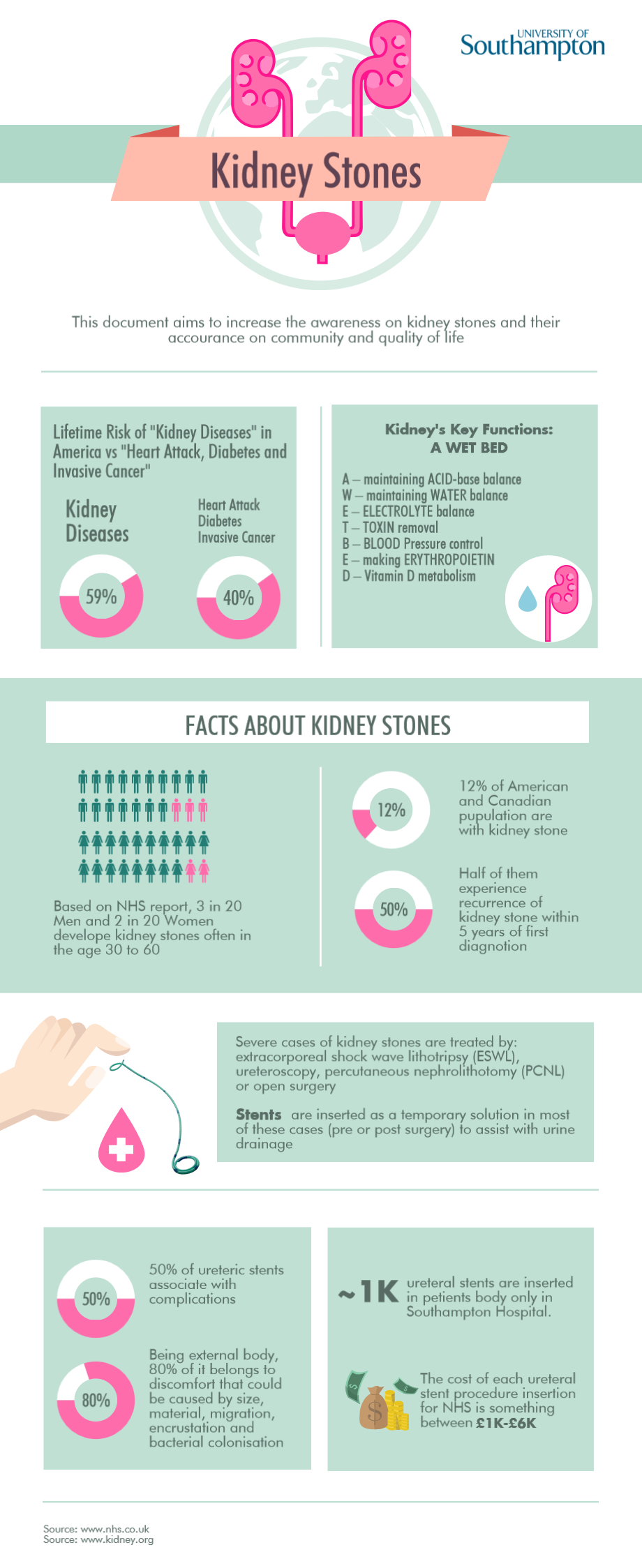Urological Devices
Drug Delivery Vehicles
Interventional Medicine
Microscale Flow Platforms & Microfabrication
Ultrasound-Mediated Therapies
There are several clinical complications associated with the deployment of endourological devices (i.e., ureteric stents), particularly caused by encrustation and bacterial biofilm formation. In MiNaTher we develop microfluidic-based models to computationally and experimentally investigate the role of flow dynamics on the progression of such complications. We closely collaborate with microbiologists and clinicians (Dr Bhaskar Somani, Endourology lead at the NHS Southampton Hospital) to develop safer and more effective endourological devices.
In MiNaTher, we develop micro- and milli-fluidic platforms to produce nanoscale drug delivery systems. These include liposomes, niosomes, and polymeric micelles/nanoparticles. Moreover, we integrate microfluidic and acoustic technologies to produce ultrasound-responsive agents (i.e., gas microbubbles and nanobubbles), employed as contrast agents in ultrasound imaging. We utilise both numerical and experimental modelling to develop efficient microfluidic reactors, and we focus on aspects relating to scalability, cost-effectiveness and industrial translation of our technology platforms.
In MiNaTher, we develop physiological and pathological microfluidic models of the human vasculature (ranging from microvessels to small arteries/veins) to understand the flow behaviour of therapeutic agents employed for the treatment of vascular disorders (varicose veins) or cancerous diseases. These models can also be adapted to evaluate the effectiveness of physical or biochemical targeting of a drug delivery vehicle, or to quantify intra-tumoral drug distribution at physiologically relevant flow conditions. We work closely with enterprises to translate our technology into the interventional medicine industry.
In MiNaTher, we design and fabricate purpose-built microfluidic flow platforms for mechanical stimulation of biological systems, including biofilms and biological cells. Systems can be integrated with other sources of mechanical stimulation, including acoustic fields. We utilise numerical simulations to quantify the stress field to which cells are exposed. Moreover, we develop innovative microfabrication technologies to rapidly prototype microfluidic devices. Our methods of fabrication are cost-effective, easy-to-perform, scalable, and suitable for less-resourced/specialised laboratories.
In MiNaTher we develop ultrasound-mediated therapies to enhance delivery of drugs and modulate/repair the function of damaged tissues. Our therapeutic approaches involve the use of ultrasound-responsive agents, to amplify or target the effect of ultrasound waves in a specific tissue. In our Labs we produce different formulations of ultrasound-responsive agents, and we prototype ultrasound stimulation systems for large-scale screening of these agents. We work closely with government bodies and clinical partners to apply our technology to the treatment of chronic infections, neurological disorders, or bone fractures.
